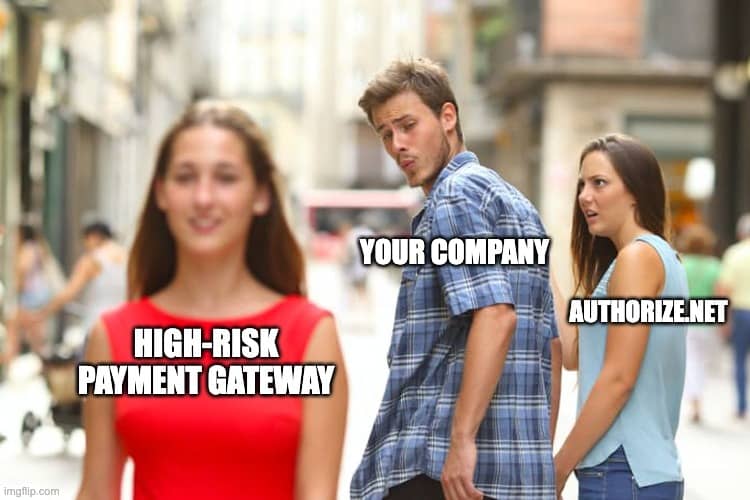How To Create a Payment Gateway for Website

Whether you are running a business or a personal website, accepting payments is one of the most important aspects of your digital presence. If you want to run an online store, accept payment from potential customers and boost your sales, then you need a payment gateway. In this blog post we’ll cover all the basic questions regarding how to create a payment gateway for your website. You can use your website as an e-commerce platform to sell goods and services to users. In this blog post we’ll talk about everything from creating your first e-commerce website through adding different features and widgets that will help you increase sales from your site. Even though all websites have some sort of online shopping capability, having a payment gateway on your site gives it credibility and trust with potential buyers who might not have heard of you before.
What is a Payment Gateway?
A payment gateway is software, hardware, or a system that helps you to accept different forms of payments from your customers. Payment gateways can help you receive credit cards, bank transfers, and e-cash payments. There are various types of payment gateways that are compatible with the type of business you have. Once you decide on what type of payment gateway you want to use for your website, be sure to choose one that best suits your needs and can support the types of transactions you might be doing on your website. Most websites use a standard online payment service like PayPal or Stripe. These services integrate seamlessly with a website’s checkout process so there is no need for separate app-based or third party apps for handling payments.
Types of Payment Gateways
There are two types of payment gateways: credit card and direct bank transfer. Each payment gateway has its own benefits and drawbacks. The most common type of payment gateway is a credit card because it’s very easy to set up and manage. This is the easiest way for new sites to start accepting payments from customers. The other type of payment gateway, which is not as well known, is a direct bank transfer. A direct bank transfer takes less time to set up than a credit card but can be more difficult to manage in the long run. This can be used if you want to accept payment only through the website or have an existing relationship with your customers that you don’t want to break by using a credit card. Direct bank transfers are also much cheaper than credit cards, which can help encourage future purchases from potential users who might not otherwise make their purchase without knowing they’re getting a good deal on the product or service they’re buying. Credit cards have been around for many years and are widely accepted by consumers so it may be difficult for new sites to gain traction before being accepted into the mainstream market with a credit card option.
How to Create a Payment Gateway for Website?
The first step in creating a payment gateway for your website is to decide which type of payment system you will be using. There are many types of payment gateways, such as PayPal and Stripe, but there are also options that don’t involve an external company. These include accepting credit card payments through a code that you embed on your website, or simply using a third party service to take care of the transaction. PayPal and Stripe are two of the most popular online payment gateways in use today. PayPal allows you to accept payments through either their own platform or through the site’s own website. The alternative option is Stripe, which can be integrated with WordPress websites by using their plugin. The plugin gives you access to a variety of tools that make it easier for your audience to complete transactions on your site without needing an intermediary like PayPal or Stripe. If you want to set up a PayPal account yourself, then you’ll need an email address and a bank account number with routing information attached. This is because PayPal initially needs this information before they can send the funds from your bank account into the account associated with your business email address. Once this has been done, it takes about one business day for them to send over the amount in question. If you want to sign-up for one of these services, then visit https://www.paypal-payments-gateway.com/ .
Why You Should Use a Payment Gateway?
Have you ever heard of a website that doesn’t accept payment? If your answer to this question is “yes,” then it’s probably not a very popular website. Why would someone want to use your website if they can’t buy anything? Allowing your customers to make purchases on your business/personal website increases the likelihood that they will return or recommend your site, leading to increased revenues and profits. A payment gateway allows you to take credit cards from customers with ease. They allow you to choose the payment processing method that fits your needs, whether it’s PayPal, Stripe, or more. Payment gateways also provide security for both the customer and the business owner when making transactions online. Another reason why using a payment gateway is necessary is because it avoids chargebacks from happening. Chargebacks are when credit card companies cancel payments after a purchase has been made and accused as fraudulent purchases. These chargebacks can hurt your business because you’re no longer able to process any other transactions through this IP address (the one where the chargeback originated). Payment gateways also provide an easy way for you to collect information about what customers are browsing on your website. This means that if people start purchasing items on a certain category of products, you’ll know what they’re looking for in advance so that you can continue offering those products later on in their shopping experience. This will build trust with customers who may not have even known what they were looking for when they first visited your site
Pros of Using a Payment Gateway
One of the many benefits of having a payment gateway on your site is that it can help you to boost sales. Some of the most important benefits include: - Boosting customer engagement - Boosting customer conversion rates - Saving time for your staff - Being able to offer more payment options - Making online shopping more convenient for your customers - Improving trust with potential customers - Increasing customer loyalty and brand awareness
Cons of Using a Payment Gateway
Although it is possible to build your own payment gateway, there are some disadvantages that come along with this decision. For example, if you create your own payment gateway and then later on decide to stop using it, you will lose access to all of the data collected from your customers. With a payment gateway like PayPal or Stripe, not only do you have access to all of this data but you also have the ability to view statistics about your website’s usage and sales. Another disadvantage of using a payment gateway is that it might be difficult for people who aren’t familiar with web development to use them properly. Creating a payment gateway requires expertise in web development, which can make the process confusing for someone who isn’t familiar with programming languages and coding processes.
Conclusion
Now that you know the basics of Payment Gateway, it’s time to dive into the nitty gritty. Here are some thoughts on whether your business should use a payment gateway for your website and the pros and cons of doing so.
FAQ’s
What is a payment gateway?
A payment gateway is a service that allows you to accept credit card, debit card and other payment methods on your website. There are many different types of payment gateway available, and some can be more suitable than others depending on the type of business you’re running. Best payment gateways for e-commerce websites include: accept all major credit cards (Visa, Master Card etc) allow you to set up a dynamic checkout page that can be configured by your users allow you to set up fraud monitoring procedures allow you to set up refunds allow cross-border payments accept recurring billing through Stripe or Payoneer.
What are the benefits of using a payment gateway?
There are a lot of benefits of using a payment gateway, but the most obvious one is that it allows you to accept payments from customers on your website and turn them into real money. This is what allows you to run an online store and make money from it. In addition to this, you can also use the payment gateways features and tools to improve your online sales and conversion rates. For example, you can use the analytics tools included in the payment gateways to track your users’ behaviour and see where they’re having problems with the checkout process or with the delivery process. You can also improve your marketing campaigns by using the marketing tools included in the payment gaterings
The other advantage of using a payment gateway is that you don’t have to worry about all of the technical details involved in taking payments, such as how you’re going to take out your credit card or debit card information securely. This can be very time-consuming, and it’s much easier if someone else takes care of all of these details for you. Finally, if you’re not sure where to start when creating a payment gateway for your website, there are many helpful articles and guides online that can walk you through the process step by step.
What are the steps required to create a payment gateway?
There are a few steps required to create a payment gateway for your website. First, you’ll need to set up your merchant account with a payment gateway provider. Then, you’ll need to create your own payment processing account with the payment gateway provider. Finally, you’ll need to install and configure the payment gateway on your website.
The following are some of the steps required to set up a payment gateway for your website:
1. Register a merchant account with a payment gateway provider: The first step is to register a merchant account with a payment gateway provider. With this account, you’ll be able to accept payments from customers and process their credit cards through the payment gateway. 2. Create your own processing account with the payment gateway provider: Once you have registered a merchant account with a payment gateway provider, the next step is to create your own processing account with the same company. This will allow you access to the company’s processor, which will manage all credit card transactions for your online store or website. 3. Install and configure the payment gateway on your website: Finally, you’ll need to install and configure the payment gateway on your website so that it can start accepting credit card payments from customers. The configuration steps may vary slightly depending on the type of payment gateway that you are using.
Read Next

Find out whether Authorize.Net works for high risk merchants, what restrictions you might face and how to get approved.

Get expert advice on selling CBD products on Shopify, including compliance tips and setting up secure payment options.

Find out why Square may deactivate merchant accounts and steps to resolve issues and maintain uninterrupted payment services.
Need a High-Risk Merchant Account?
Disruption-free payment processing at the best price for your situation, guaranteed.
Get Free Guidance Now!